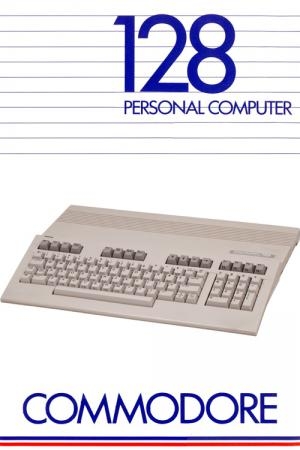
Commodore 128
Commodore 128 Specifications
| Manufacturer: | Commodore Business Machines |
| Developer: | Commodore International |
| CPU: | Zilog Z80A @ 4 MHz |
| Memory: | 128 KB |
| Graphics: | VIC-II E (320×200, 16 colors, sprites, raster interrupt) |
| Sound: | SID 6581/8580 (3× Osc, 4× Wave, Filter, ADSR, Ring) |
| Display: | 320×200, 16 colors |
| Controllers: | 2 |
The Commodore 128, also known as the C128, C-128, or C= 128 (the "C=" representing the graphical part of the logo), is the last 8-bit home computer that was commercially released by Commodore Business Machines (CBM). Introduced in January 1985 at the CES in Las Vegas, it appeared three years after its predecessor, the Commodore 64, the bestselling computer of the 1980s. Approximately 2.5 million C128s were sold during its four year production run.
The C128 is a significantly expanded successor to the C64, with nearly full compatibility. It is housed in a redesigned case with an improved keyboard including a numeric keypad and function keys. Memory was enlarged to 128 KB of RAM in two 64 KB banks. A separate graphics chip provided 80-column color video output in addition to the original C64 modes. It also included a Zilog Z80 CPU which allows the C128 to run CP/M, as an alternative to the usual Commodore BASIC environment. The huge CP/M software library, coupled with the C64's software library, gave the C128 one of the broadest ranges of available software among its competitors.
The primary hardware designer of the C128 was Bil Herd, who had worked on the Plus/4. Other hardware engineers were Dave Haynie and Frank Palaia, while the IC design work was done by Dave DiOrio. The main Commodore system software was developed by Fred Bowen and Terry Ryan, while the CP/M subsystem was developed by Von Ertwine.
Latest on Commodore 128

Leather Goddesses of Phobos
The year is 1936, and suddenly the protagonist is abducted by the Leather Goddesses for the final testing in the plan which will enslave every man and...

A Mind Forever Voyaging
"If you can look into the seeds of time, and say which grain will grow and which will not..." -Shakespeare IT'S 2031. The world is on the brink of ...